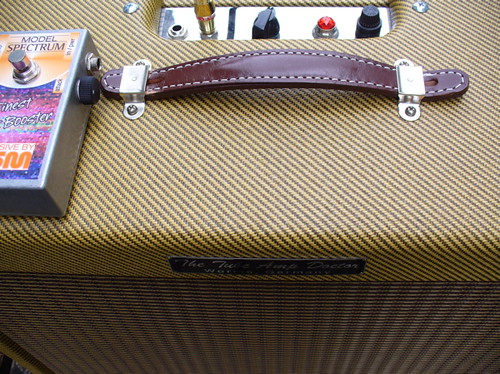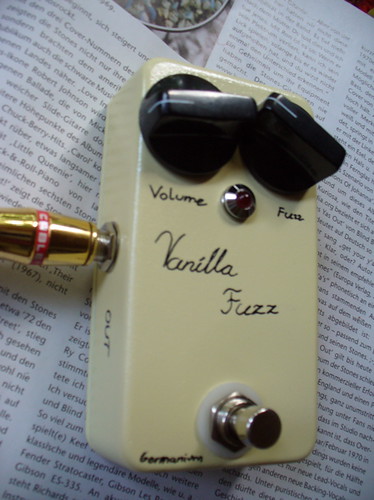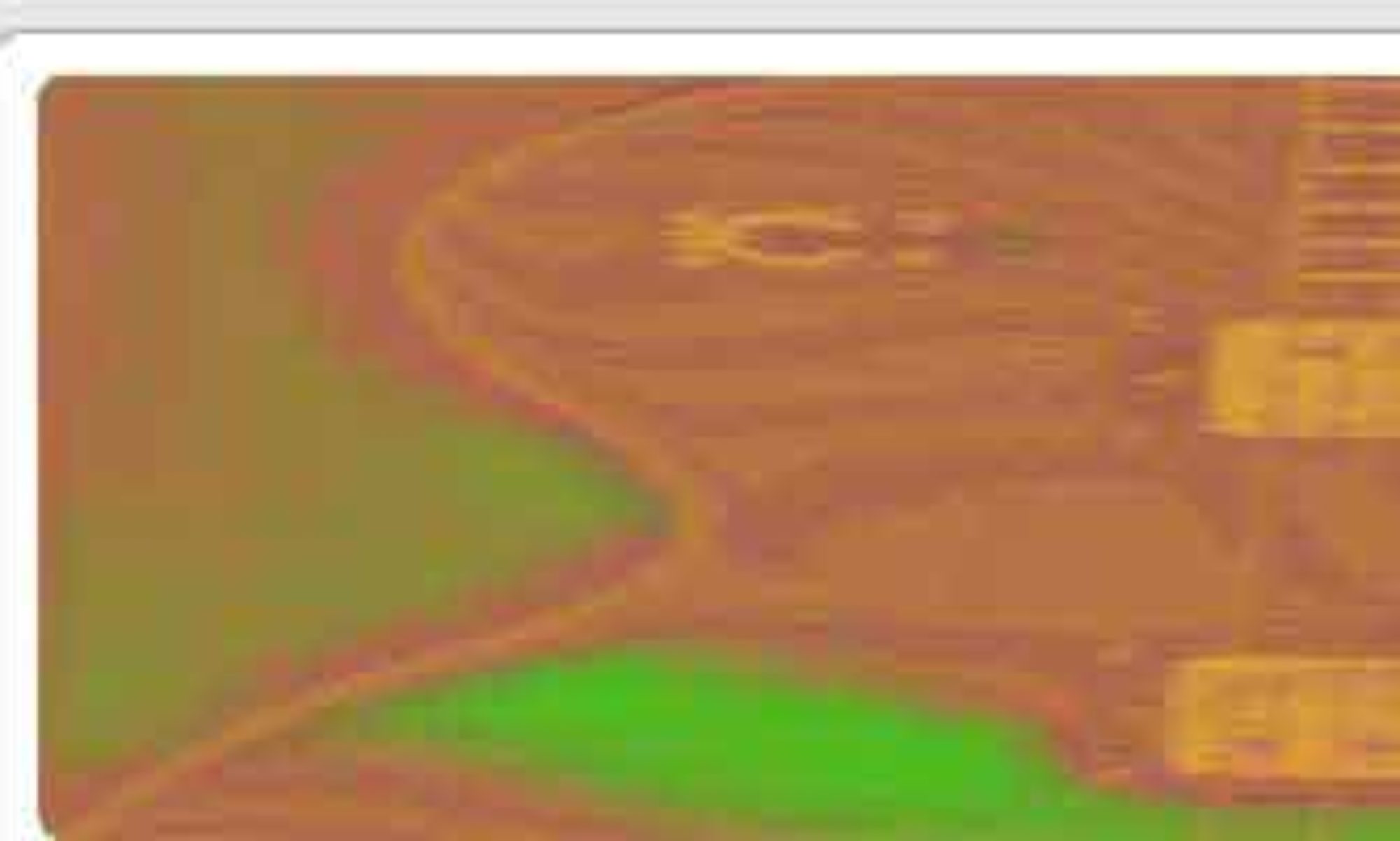[audio:tubesound.mp3]
When I wrote about vintage sounds I promised to explain what makes tube amps so indispensable for guitar players.
Tubes (or valves in British English) strongly react to the player’s plucking the string softer or harder, allowing for shifting from clean to crunch without readjustment of the knobs on your amp. Many players just use the guitar’s volume pot to add the right amount of distortion, so in reality this pot ends up more as a distortion control than a volume pot… All the distortion units on the market are but an approximation to a good tube distortion (some of them melting very nicely into the amp’s distortion, though).
With tube amps, the frequency spectrum varies significantly with any variation in playing technique – there may suddenly be more bass if you pluck very softly, and there may arise an edgy, cutting note if you pluck harder. At high gain settings, the power tubes themselves begin to distort the sound, and this is what is said to be a guitar player’s heaven!
There is a natural compression when you drive a tube amp hard enough, giving more sustain to your tone. It is impossible to describe the richness and the many shapes and colors of tone you can get with a good tube amp. I won’t extend on different types of tubes here, but some are connected with certain amps: the 6V6, 6L6 and 5881 with Fender, the EL 34 with Marshall and the EL 84 with Vox. They do shape the sound significantly, e.g. the EL 34 is held responsible for the “British sound” associated with the rougher kind of distortion of Marshall Plexi amps.
The Fender Champ (used in the musical track above) is one of the simplest, smallest amps in existence, with only one preamp tube (12AX7), one rectifier (EZ 81) and one power tube (6V6). To get some distortion out of it, I used my favorite treble booster, and the usual tube reverb unit to enhance the sound.
To exploit the potential of tube amps takes some experience. I found out I had to practice specifically to be able to handle a new sound or a new amp. Playing technique has to adjust with every amp or setting. What for me turned out to be most rewarding was exploring the field of crunch sounds, as they cover the whole spectrum in between clean and distorted. A bunch of options and variants come in, as you have to find the right guitar with the right pickups to match your amp and give the desired sound…
Some years ago I didn’t seem to know what my desired sound was, but I didn’t let it discourage me. After a while it showed that distinctiveness can only be a result of the process. How could you know what you want, when you lack first-hand experience? So it will take some time, and I can only encourage everybody to experiment on your own, trusting your own ears and nobody else’s.
My personal “master plan” is to create a best-of all-worlds-situation in my studio by having examples of Vox, Fender and Marshall at my disposal. I’m already oversupplied with Vox, but there is no Marshall… I’m planning to built one from another amp kit (like the Champ) …maybe next year…
guitar & gear: Fender Jaguar, Fender Tweed Champ, BSM Fuzzbooster, Tube Reverb









